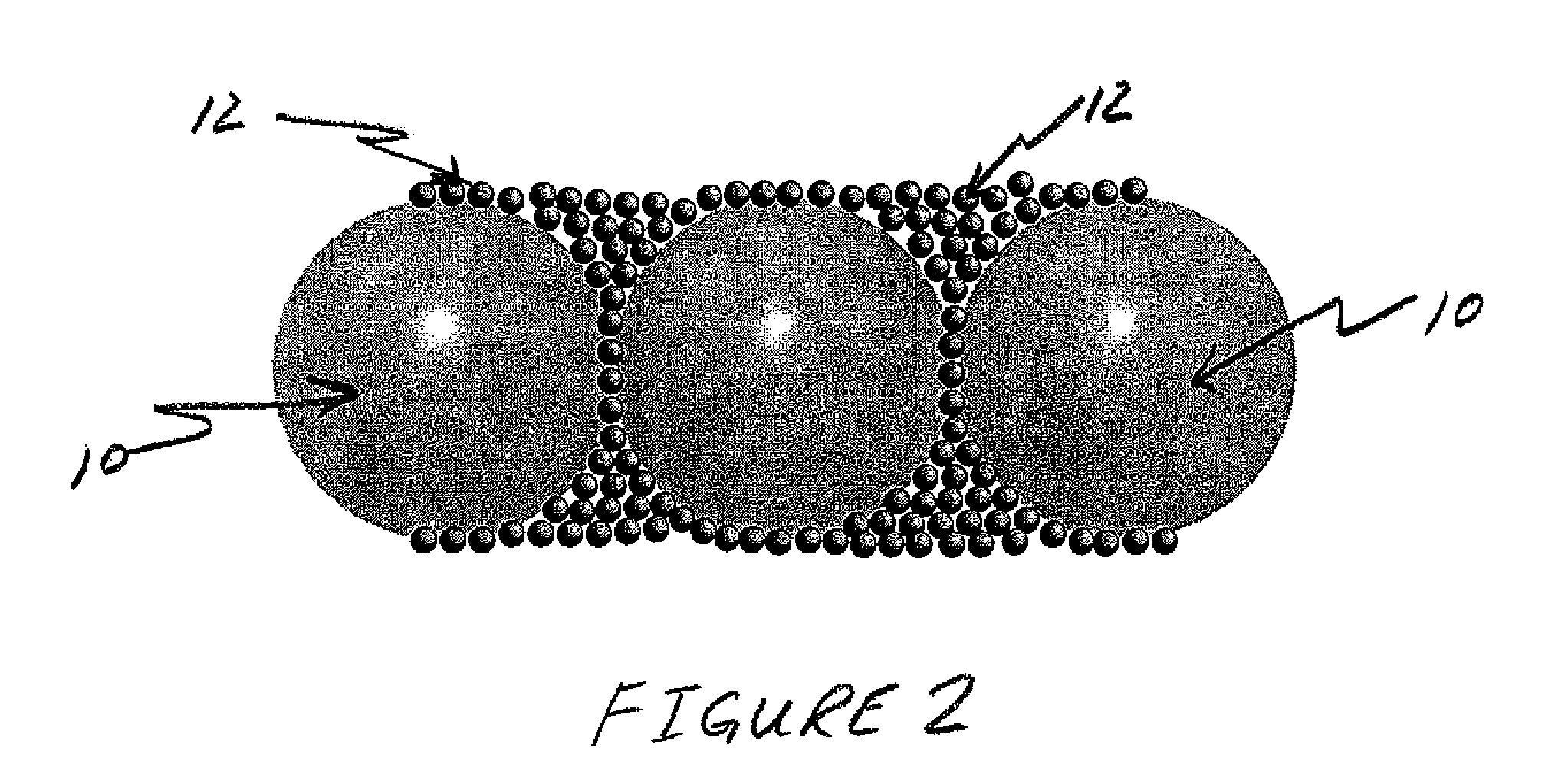Conductive materials
a technology of conductive materials and fillers, which is applied in the direction of non-metal conductors, conductors, metal/alloy conductors, etc., can solve the problems of high cost of coatings and adhesives, and achieve the effects of reducing the percolation threshold of conductive fillers, reducing the volume fraction of electrically conductive fillers, and increasing the electrical conductivity of materials
- Summary
- Abstract
- Description
- Claims
- Application Information
AI Technical Summary
Benefits of technology
Problems solved by technology
Method used
Image
Examples
Embodiment Construction
[0007]Percolated filler networks containing polymer materials in combination with conductive filler particles are commonly utilized in applications requiring electrical conductivity. Generally, the conductive filler materials are substantially more expensive than the polymer filler materials. Thus, for cost reasons, it is advantageous to minimize the amount of conductive filler material that is utilized in the network. In the situation where two particles of very different sizes are packed together, the percolation threshold of the smaller particles is significantly reduced. Thus, the use of larger sized polymer particles to create excluded volume between the particles reduces the amount of smaller sized conductive filler material needed to form a conductive network.
[0008]To form the network, conductive filler particles are used along with polymer emulsions containing polymer particles that are larger in size than the conductive filler particles. The average size of the conductive f...
PUM
| Property | Measurement | Unit |
|---|---|---|
| size | aaaaa | aaaaa |
| size | aaaaa | aaaaa |
| diameter | aaaaa | aaaaa |
Abstract
Description
Claims
Application Information
 Login to View More
Login to View More - R&D
- Intellectual Property
- Life Sciences
- Materials
- Tech Scout
- Unparalleled Data Quality
- Higher Quality Content
- 60% Fewer Hallucinations
Browse by: Latest US Patents, China's latest patents, Technical Efficacy Thesaurus, Application Domain, Technology Topic, Popular Technical Reports.
© 2025 PatSnap. All rights reserved.Legal|Privacy policy|Modern Slavery Act Transparency Statement|Sitemap|About US| Contact US: help@patsnap.com



